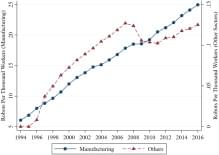Saúl Morales RodriguézAuthor
The success of deep learning depends heavily on the availability of large datasets, but in robotic manipulation there are many learning problems for which such datasets do not exist. Collecting these datasets is time-consuming and expensive, and therefore learning from small datasets is an important open problem. Within computer vision, a common approach to a lack of data is data augmentation. Data augmentation is the process of creating additional training examples by modifying existing ones. However, because the types of tasks and data differ, the methods used in computer vision cannot be easily adapted to manipulation. Therefore, we propose a data augmentation method for robotic manipulation. We argue that augmentations should be valid, relevant, and diverse.




